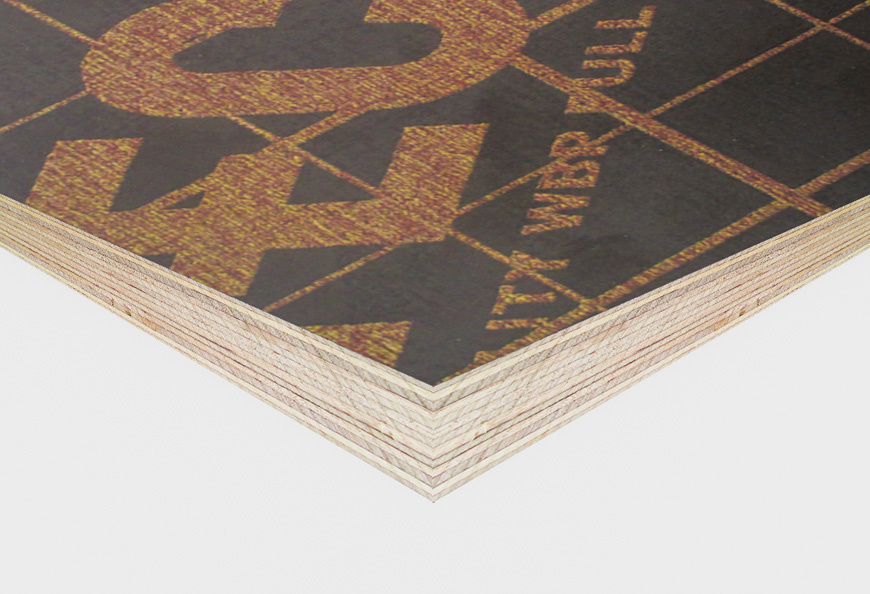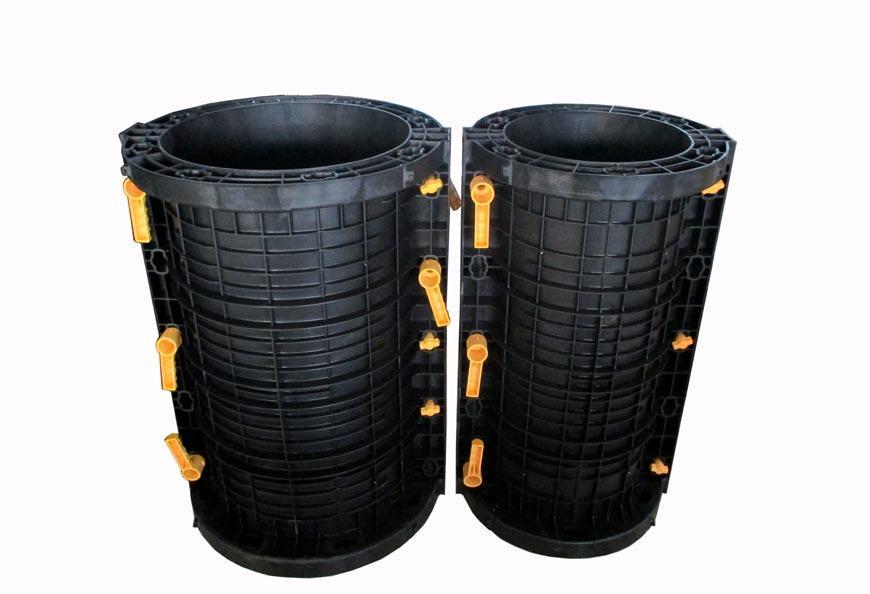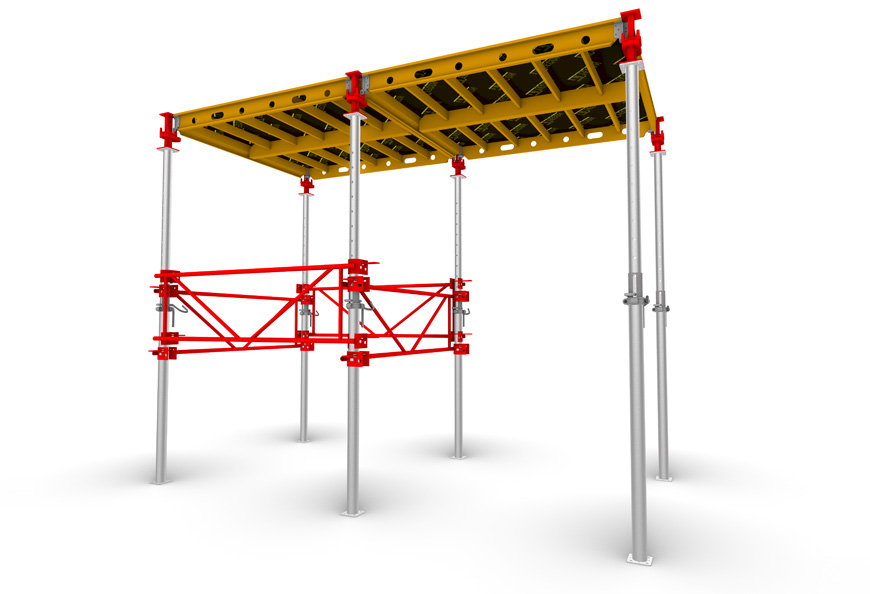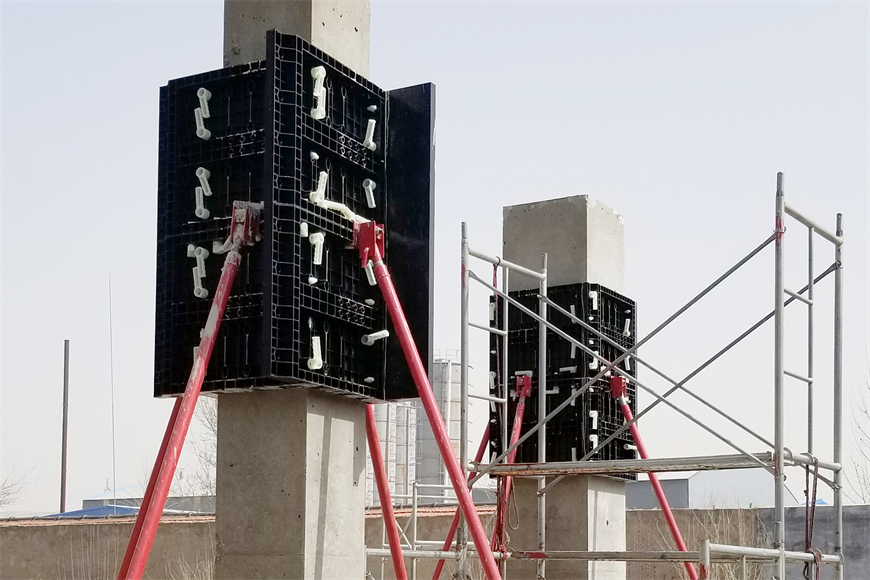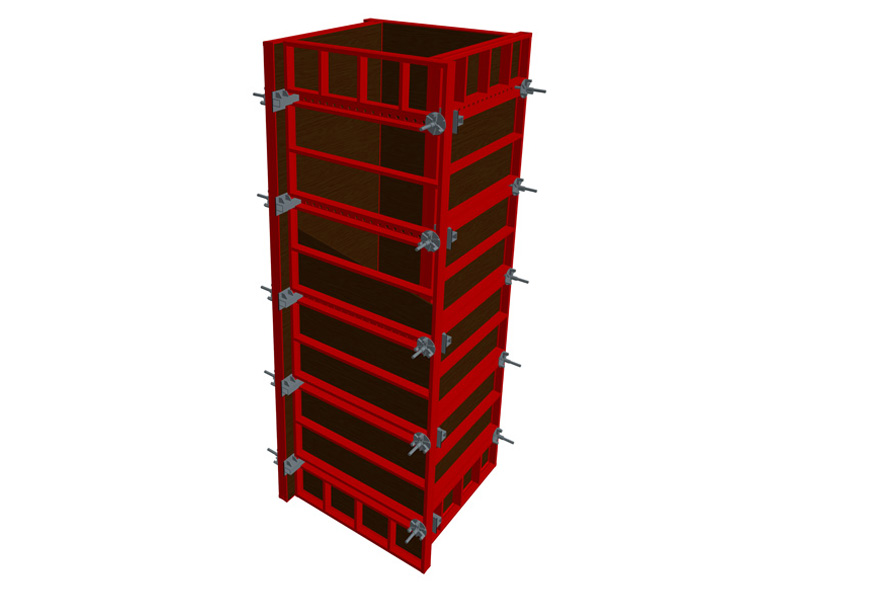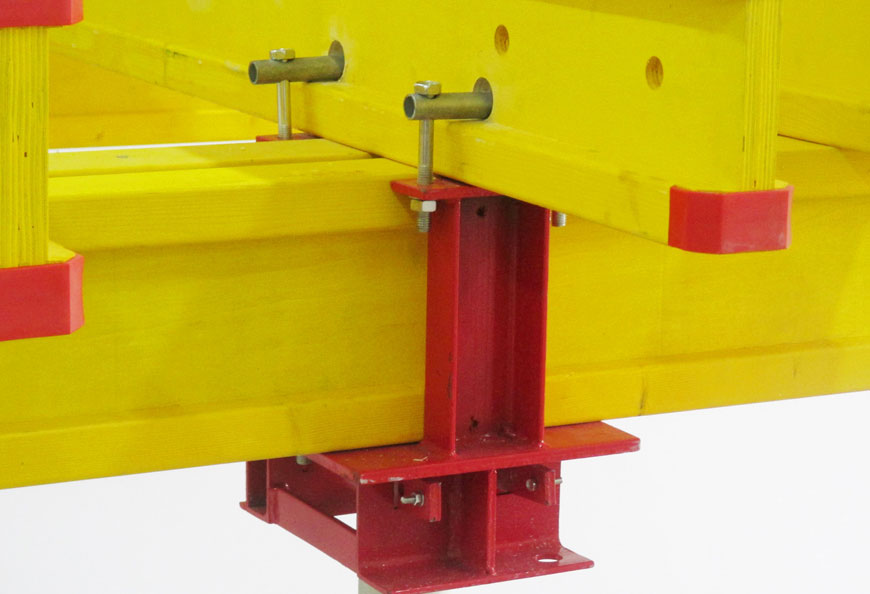Types of construction formworks can be classified into five categories based on the different materials used: aluminum formworks, steel formworks, plain formworks, phenolic mirror formworks, and plastic formworks. Different types of formwork in construction have their own unique characteristics and uses.
The assembly of aluminum formworks is simple and the stability is good. They have strong pressure resistance and can be freely combined according to different shape requirements. They can be assembled into extremely complex overall frameworks. Construction personnel can quickly complete the assembly of aluminum formworks with simple tools. In addition, the number of times that aluminum formworks can be recycled and reused is higher than that of other construction formworks.
The steel formwork is easy to construct and has strong versatility. It can be recycled multiple times and has strong durability and stability. However, maintenance and storage should be taken into consideration to prevent rust from affecting the use of the material.
Plain formworks are a type of plywood. The manufacturing process is relatively complex, and the surface covering technology can make the plain formworks smoother. Plain formworks are lightweight and convenient for transportation and turnover. They are also easy to use for building structures, reducing a lot of workload and labor costs in construction projects. They also have strong stress resistance, avoiding the shortcomings of directional wood formworks, while possessing strong overall integrity, lightweight materials, fewer joints, high strength, no cracking, and strong practicality.
Phenolic mirror formworks, also known as red-faced construction formworks, have improved waterproofing effects due to the use of phenolic adhesive on the surface. The smooth surface makes demolding easier, but the number of times they can be used is less than that of plain formworks.
Plastic formworks are a type of composite formwork made of polypropylene. After molding, they can form different combinations and connections. They have high strength and are easy to demold, effectively improving construction speed. They can be used as guardrail formworks, gutter formworks, building formworks, highway formworks, and slope retaining formworks.
Regardless of the type of construction formwork, they can be divided into on-site assembly and disassembly, fixed, and mobile types during construction.
The on-site assembly and disassembly formworks require on-site measurements of the specific dimensions of the construction site. The formworks are assembled on-site according to the dimensions and spatial position, supported by fixing tools, and then the concrete is allowed to dry before demolding.
The fixed formworks need to be prefabricated to specified sizes on-site. Various concrete membranes and brick membranes belong to fixed formworks.
The mobile formworks can move horizontally or vertically, such as sliding formworks for pouring concrete into walls, columns, and chimneys.
The above are introductions to the types of construction formworks, and different materials of construction formworks are suitable for different types of construction projects and can be used in combination with each other.
As one of the leading experts in the field of formwork and scaffolding engineering, our extensive range of off-the-shelf and customized products ensures that we can offer solutions for your construction projects, no matter the size or location. Feel free to contact us for consultation.
